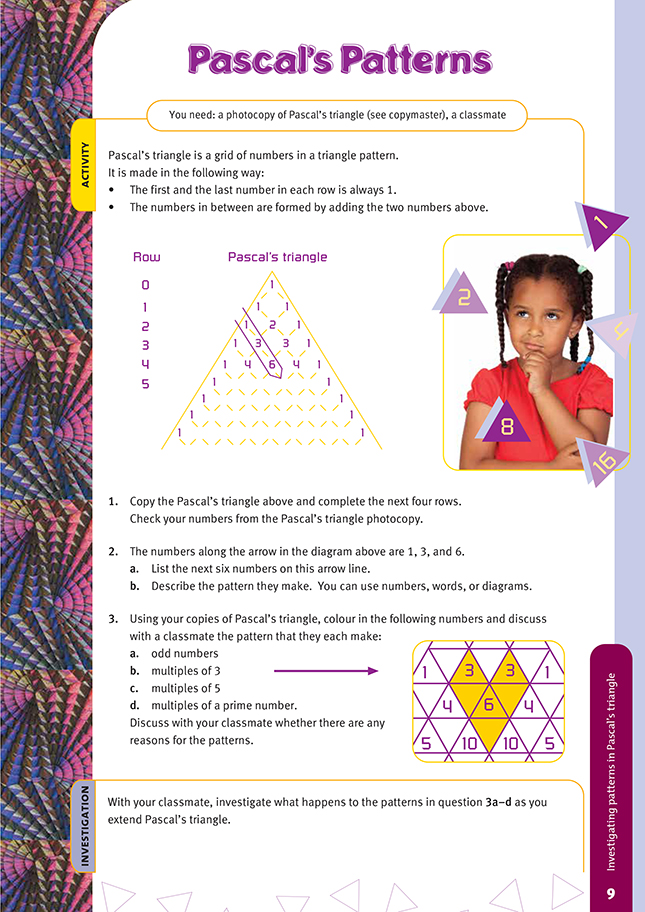Pascal's Patterns
This is a level 4 algebra activity from the Figure It Out series.
A PDF of the student activity is included.
Click on the image to enlarge it. Click again to close. Download PDF (196 KB)
investigate patterns in Pascal's Triangle
Photocopy of Pascal's Triangle (copymaster)
FIO, Level 4+, Number, Book Six, Pascal's Patterns, page 9
A classmate
A copymaster for Pascal’s triangle is provided at the end of these notes. Don’t give the students the photocopies of Pascal’s triangle until they have done question 1 as it will give them the answers. After doing page 7 of the students’ book, the students should recognise the pattern in question 2 (1, 3, 6, 10, 15, and 21) as being triangular numbers.
The students will have various ideas about the “patterns” made by the odd numbers, multiples of 3, multiples of 5, and multiples of a prime number. The Investigation, which involves extending Pascal’s triangle, might provide them with some further clues to possible patterns.
The students may be interested to know that Pascal’s triangle originated from a question posed to Pascal by Chevalier de Mere, an acquaintance who was a gambler. He wanted to know what the chances were of a double six coming up if two dice were tossed 24 times. Pascal’s triangle is a chart of probabilities.
Answers to Activity
1.
2 . a. 10, 15, 21, 28, 36, 45
b. Explanations will vary. For example:
• The difference between the numbers isincreasing by 1 each time.
• The numbers are triangular numbers:
. 1
. . 3
. . . 6
. . . . 10
. . . . . 15
. . . . . . 21
3. Comments on the patterns will vary. You should notice that a different pattern emerges with each different factor.
Investigation
Comments will vary.

